How To Format External Hard Drive For Windows 10
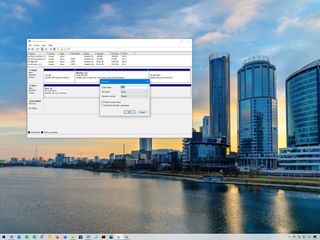
On Windows 10, when connecting a new internal or external hard drive, it's important to spend the time to format it before storing files. You want to do this to make certain that the drive is empty, working as expected, and costless of malware that might otherwise harm the current setup and files. Information technology's also important to format the storage to ensure that it's using the proper settings to avoid compatibility bug.
Whenever you format a hard drive, the data volition be deleted, since function of the procedure includes purging the file system tabular array that tracks the locations of the files written on deejay. The procedure will then define the surface area where files will exist stored, and a compatible file system (such as NTFS, FAT32, or exFAT) will exist applied to organize the new content. The arrangement will keep to detect the previous data, merely it'll identify that information as bachelor infinite to store new data.
Windows 10 includes many methods to format a hard drive, but using Disk Management is perhaps i of the best options for most users.
In this Windows 10 guide, we'll walk you through the steps to properly format a traditional difficult drive or Solid-State Drive (SSD), whether information technology already has a partition or was never initialized.
- How to format existing sectionalization using Disk Management
- How to create and format partition using Deejay Direction
How to format existing partition using Disk Direction
When you're dealing with a drive that already has a partition, you tin can format the existing partition to delete its files and start with a make clean storage.
To format a division using Disk Direction, utilize these steps:
- Open Start.
- Search for Create and format hd partitions and click the top result to open up the Disk Management panel.
- Right-click the new hard bulldoze and select the Format option.
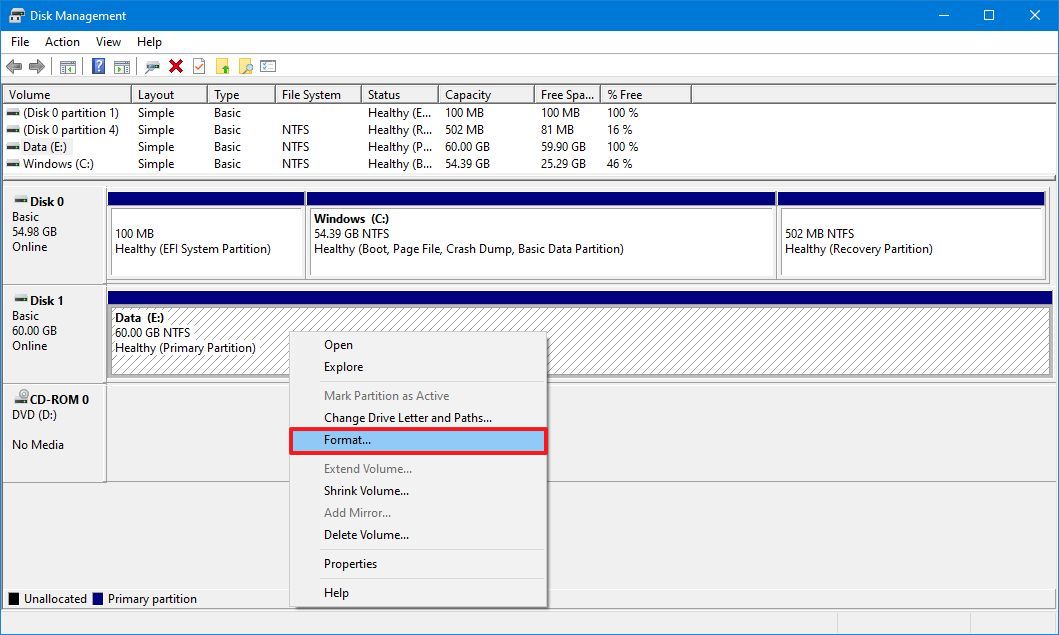
- In the "Value characterization" field, ostend a new name for the storage.
- Use the "File organization" drop-down menu, and select the NTFS option (recommended for Windows 10).
- Use the "Allocation unit size" drop-down menu, and select the Default option.
- Check the Perform a quick format option.Quick tip: The quick format option wipes the drive fast, just information technology doesn't bank check for issues. On the other hand, when immigration the pick, a full format will be performed, which not just wipes the drive clean, but it'll also check for bad sectors. Information technology'south an option that could take many hours depending on the size, simply it's a practiced practice to make certain the drive is in working conditions.
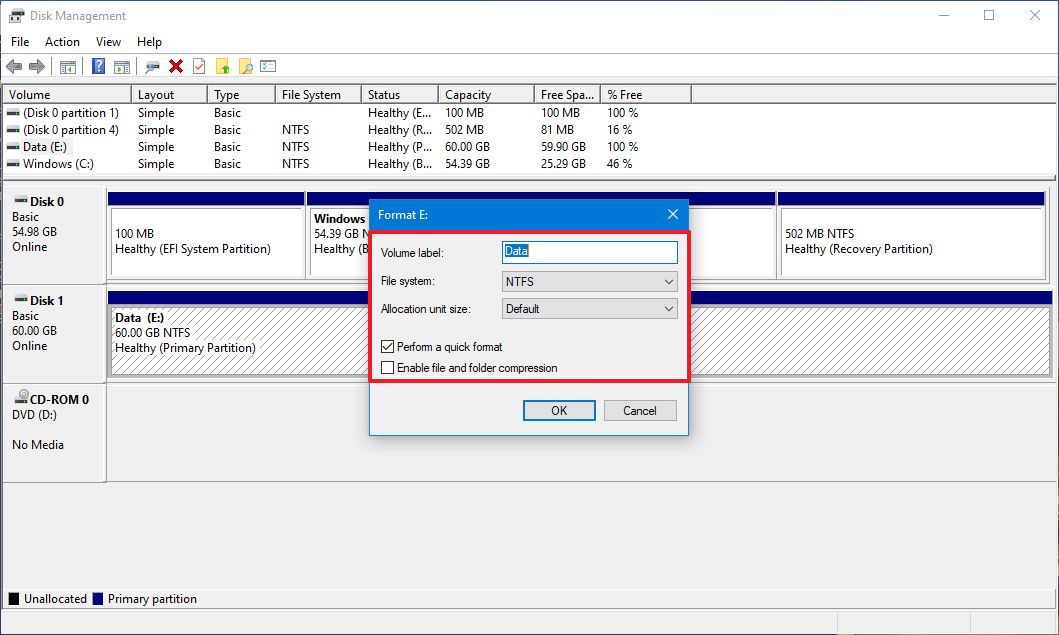
- Clear the Enable file and folder compression option.
- Click the OK button.
- Click the OK button again.
Once you complete the steps, the tool will format the selected segmentation on the drive, and and so you tin can begin storing files.
How to create and format partition using Disk Management
In the case that you have a difficult drive that was never partitioned and formatted, it will not appear in File Explorer, and yous'll have to initialize, create a new partition, and then format information technology earlier you tin utilise it.
Usually, y'all can tell a difficult drive doesn't have a partition, considering it will not announced in File Explorer, and on Disk Management, it'll show upwardly as unallocated infinite.
To set up a new hard bulldoze with raw space on Windows 10, use these steps:
- Open Start.
- Search for Create and format hard disk partitions and click the peak result to open up the Deejay Management console.
- Right-click the hard drive marked every bit "Unknown" and "Not Initialized" and select the Initialize Disk option.
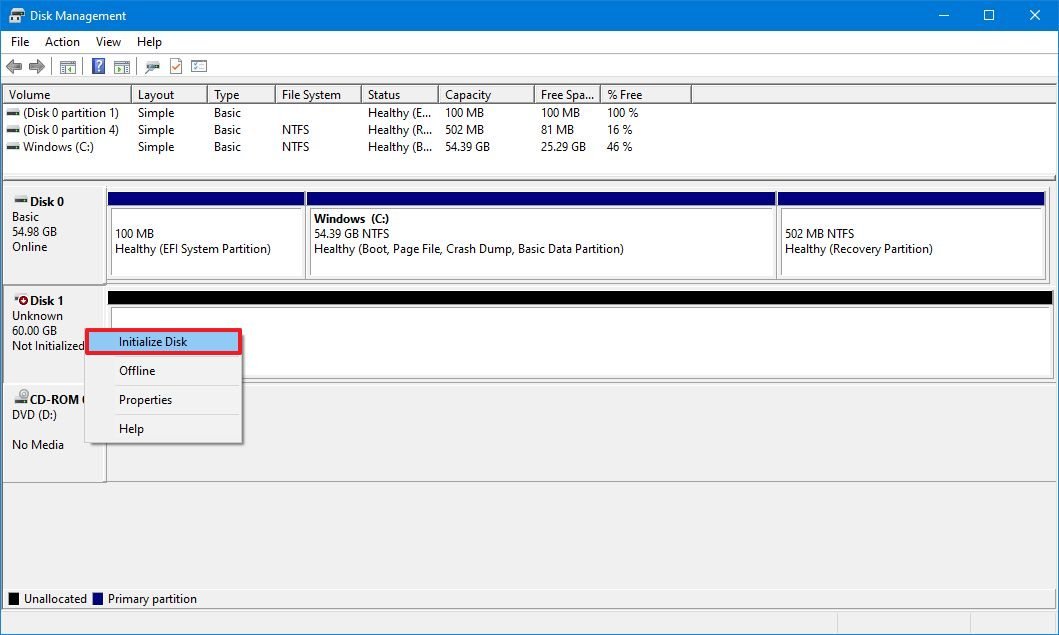
- Under the "Select disks" section, check the disk to initialize.
- Select the division mode:
- Principal Boot Record (MBR) for hard drives smaller than 2TB in size.
- GUID Partition Table (GPT) for hard drives larger than 2TB in size.
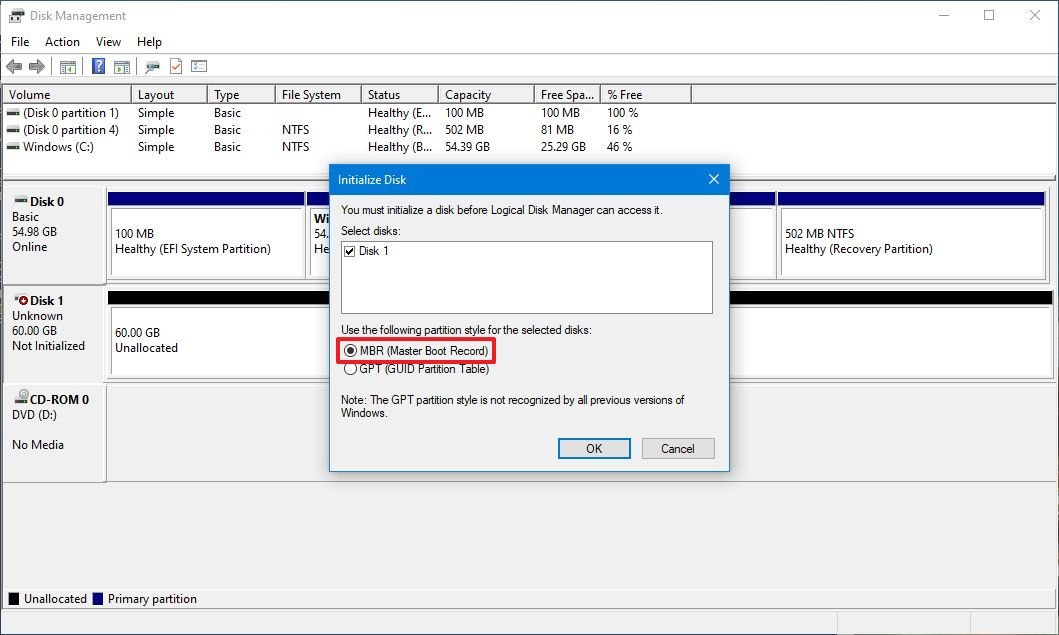
- Click the OK button.
- Correct-click the Unallocated space function of the storage, and select the New Just Value option.
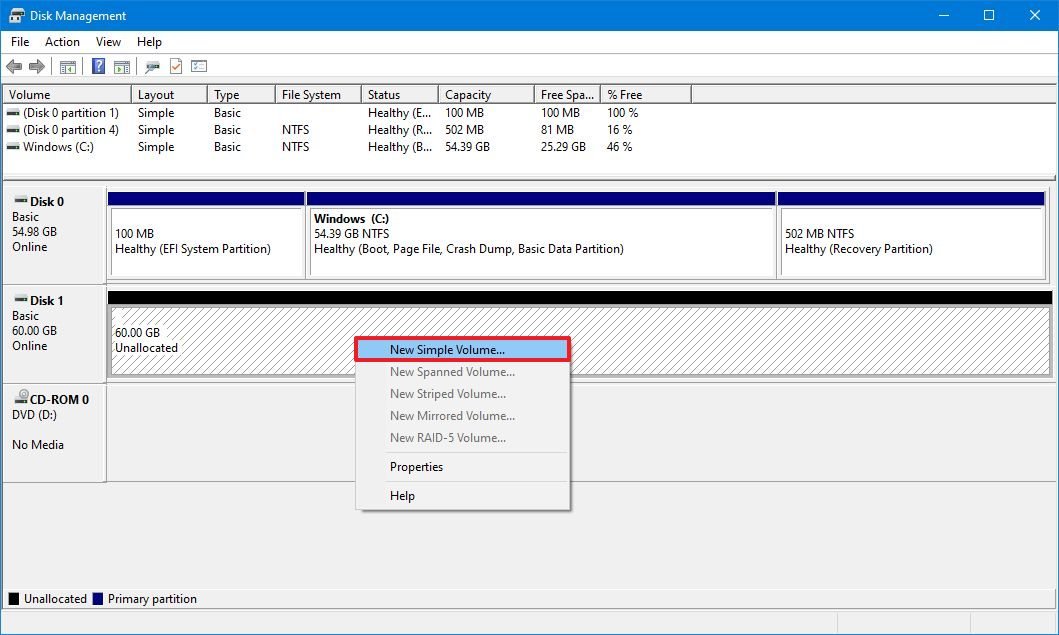
- Click the Next button.
- Under the "Simple volume size in MB" section, leave the default size if you're planning to use the unabridged hard drive to shop files. Otherwise, specify the amount of space in megabytes you want to classify for the partition.
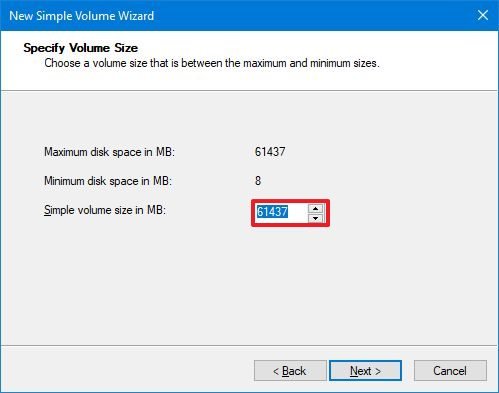
- Click the Side by side button.
- Use the "Assign the following drive letter" driblet-down card to select a new drive letter.
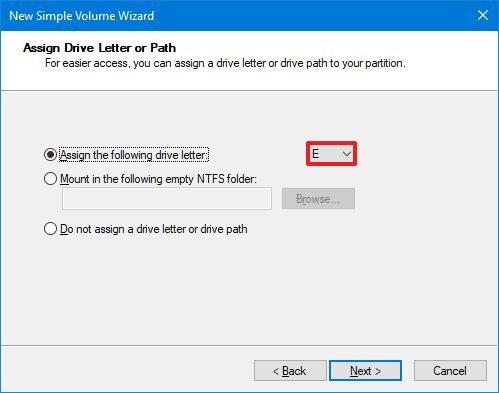
- Click the Next push button.
- Use the "File system" drop-down menu, and select the NTFS option (recommended for Windows 10).
- Use the "Allocation unit size" drop-down carte du jour, and select the Default option.
- In the "Value characterization" field, blazon a descriptive name for the storage.
- Check the Perform a quick format option.Quick tip: To perform a full format that includes a deejay check, clear the quick format option. If you use the total format selection, remember that it can have many hours to complete depending on the size.
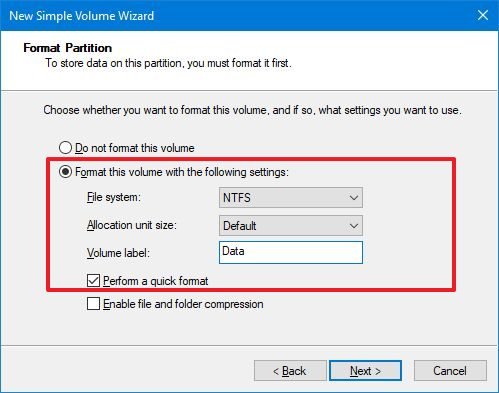
- Clear the Enable file and binder compression option.
- Click the Side by side push.
- Click the Finish button.
After you complete the steps, the new difficult drive volition be initialized, partitioned, and properly formatted.
If the drive is exhibiting problems using the Deejay Management tool, as a effect of data corruption or another issue, yous can use the DiskPart command-line tool to resolve the problem.
Nosotros're focusing this guide on Windows 10, but these instructions should also piece of work on Windows 8.i and Windows 7.
Mauro Huculak is technical author for WindowsCentral.com. His primary focus is to write comprehensive how-tos to assist users get the most out of Windows 10 and its many related technologies. He has an IT background with professional person certifications from Microsoft, Cisco, and CompTIA, and he'due south a recognized member of the Microsoft MVP community.
Source: https://www.windowscentral.com/how-format-new-hard-drive-windows-10
Posted by: tylerhishadinin.blogspot.com

0 Response to "How To Format External Hard Drive For Windows 10"
Post a Comment